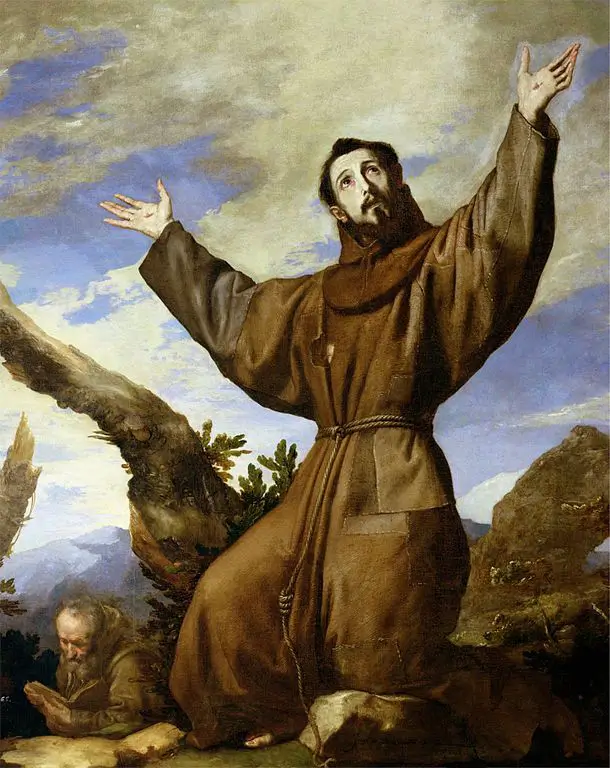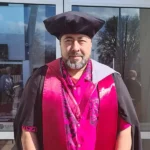Jusepe de Ribera, ‘St. Francis of Assisi’, 1642, 200cm x 162 cm, oil on canvas, Royal Monastery of San Lorenzo de El Escorial, https://commons.wikimedia.org/wiki/File:Saint_Francis_of_Assisi_by_Jusepe_de_Ribera.jpg
Choose language:
Christians are familiar with the role of prophets in the Old Testament and later throughout the history of the Church. Prophets were called by God in specific eras/contexts to address various issues of concern. Prophets held various roles, including being spokespeople for God through sharing inspired messages, predicting future events, proclaiming God’s messages to the public, serving as moral/intelligent leaders and/or as critics/rebels/reformers of their societies.[1] While prophets were known for delivering messages of impending danger and calamity, they also sent messages of encouragement and hope to God’s people. I argue that the American historian Lynn T. White Jr. was a prophet of the ecological crisis in the 1960s. The seeds of his message were later grown into the tree of the care for God’s creation in the World Council of Churches (WCC).
The history of environmentalism under the WCC can trace its beginning to the variety of reactions to White’s famous article, “The Historical Roots of Our Ecological Crisis”, in 1967.[2] White argued that the ecological crisis has deep religious roots, tying it to Western Christianity’s long-standing view that humanity has dominance over nature. White’s article was instrumental in bringing to light the imbrication of Christians’ behaviours and ideologies with environmental damage, and pushing organisations within and between churches to grapple with this legacy and the way forward. In this post, I will connect the intellectual engagement with climate change history to the past and current response of the World Council of Churches (WCC) to the climate crisis.
White’s work was compelling, in part, due to the broader context in which it was published: the rising tide of passionate science communications about the consequences of human exploitation on the environment which became prominent in the 1960s, and an undeniable series of major environmental disasters. In the United States, for example, there was widespread smog in New York City and Los Angeles, a significant oil spill in Santa Barbara in February 1969, and fires in the Cuyahoga River in June of the same year. All of these events received widespread public attention in news reporting and caused alarm and concern for Americans.[3]
In addition to these events, a series of landmark publications grabbed public attention. Rachel Carson’s 1962 book Silent Spring accused the chemical industry of sending disinformation to the public, hiding the truth about the detrimental effects of DDT (a pesticide) on the environment. Carson also blamed government officials for approving the chemical industry’s marketing campaign without questioning.[4] Paul Ehrlich’s book The Population Bomb, originally published in 1968, brought severe ecological events and the human exploitation of the environment together, helping the public become aware that these issues were all connected. For instance, rapid population growth amounted to rising demands over limited resources, which led to imprudent decisions about resource use. The environmental events around them, plus the effective communication in these texts, pushed the American public to demand change.[5] This spread to other countries as well.
White’s article attributed the exploitative attitude described in Carson’s and Ehrlich’s work to Christianity’s creation narratives, such as Genesis 2, which declared humanity the centre of creation while relegating nature to a supporting role, serving humanity. According to many ecologists who published after White, because of this Christian belief, Christians had tended to exploit nature for their own gains regardless of the harms being done to the environment and to other species.[6] This strikingly contrasted with many indigenous peoples’—including Tongans’—beliefs and practices prior to their interaction with European Christian missionaries. Tongans believed in the interconnection and the oneness of creation, and that human beings were just a part of, and not the centre of, creation. We will pick up the story of Tongan churches’ responses to climate change in a later post.
White suggested that Christianity had to revisit its values and beliefs in order to find new approaches to understanding the relationship between humanity and the environment. This included the need for Christianity to transform the theology that declares humanity to have dominion over nature. Although White strongly blamed Western Christianity for the roots of the ecological crisis, his paper did not represent a rejection of Christianity. As he argues, “Since the roots of our trouble are so largely religious, the remedy must also be essentially religious.”[7] White proposed some approaches that Christianity could adopt. For example, Christianity needed to revisit its values and beliefs that embrace the environment—such as preserving, respecting and protecting God’s creation (Gen 2:15; Psa 24:1)—and build on those aspects. Another example was to follow the footsteps of Saint Francis of Assisi, especially his care for nature.[8]
In the past fifty-six years, many have responded to White’s thesis, both in support of and against his arguments. Globally, this has led to some changes in various church denominations; while Anglicans/Episcopalians have mobilised in support of environmentalism, other church denominations (e.g. Pentecostals and Evangelicals) have strengthened their anti-environmentalism. Some churches are denying climate change while others are revisiting their Christian theology and the indigenous cultures of the places where they are based. Though churches have taken different positions on climate change, it is important to highlight how White’s prophetic message had a significant impact on churches and how they have responded to the natural environment throughout the past six decades.
The solutions he proposed in his prophesies have been largely heeded, too; the Christian alignment with environmentalist theologies has been significant, as is represented by the approach taken by the World Council of Churches (WCC). The WCC comprises most of the world’s Orthodox churches (Eastern and Oriental), African Instituted, Anglican, Assyrian, Baptist, Evangelical, Lutheran, Mennonite, Methodist, Moravian, Old-Catholic, Pentecostal, Reformed, United/Uniting and Free/Independent churches, Disciples of Christ and Friends (Quakers). WCC has a long history, from the 1960s to the present day, of caring for the wellbeing of humanity and the environment, especially in its concerns over nuclear weapons testing and proliferation. Through most of its history, the WCC has crusaded for disarmament. WCC’s environmentalism has been encouraged and supported throughout the years via its member churches across the globe. The ecumenical mission, social justice, environmental and other issues of concern/interest in the Pacific region have led to the formation of the Pacific Conference of Churches (PCC) as a part of the WCC structure and governing bodies in the mid-1960s, the subject of my next post. And yet, for all its claims to care for the environment, and as we will see in the following post, the response of the WCC to environmental issues has been confined to conversations and meetings, without concrete initiatives happening on the ground.
This is the second in a series of four posts. Click here for the first post: A History of Care for God’s Creation within the Church: It’s Time to Walk the Walk! Click here for the third post: The Pacific Conference of Churches (PCC) and Practical Initiatives Addressing the Climate Crisis. Click here for the fourth post: Churches and Climate Change in Tonga: A Real Measure of the Effectiveness of Pacific Conference of Churches’ Climate Works
Footnotes
1 Dorothy Emmet, ‘Prophets and Their Societies’, The Journal of the Royal Anthropological Institute of Great Britain and Ireland 86, 1 (1956), 13–23.
2 Lynn T. White, Jr., ‘The Historical Roots of Our Ecological Crisis’, Science 155 (March 1967), 1203-7.
3 Michigan in the World and the Environmental Justice HistoryLab, ‘“Environmental Crisis” in the Late 1960s · Exhibit · Give Earth a Chance: Environmental Activism in Michigan’, Projects of the U-M History Department (accessed 31 July 2024).
4 Rachel Carson, Silent Spring (Houghton Mifflin, 1962). For a reflection on its significance, see: Dorothy McLaughlin, ‘Silent Spring Revisited | Fooling With Nature | FRONTLINE | PBS’, n.d. (accessed 31 July 2024).
5 Paul Ehrlich, The Population Bomb (Ballantine Books, 1968). Further discussed in “Environmental Crisis” in the Late 1960s · Exhibit · Give Earth a Chance: Environmental Activism in Michigan’.
6 Paul Collins, God’s Earth: Religion as if Matter Really Mattered (A Dove Publication, 1995), 87; Peter Harrison, “Having Dominion: Genesis and the Mastery of Nature,” in R. J. Berry, ed, Environmental Stewardship: Critical Perspectives – Past and Present (T & T Clark International, 2006), 21; Thomas Sieger Derr, “Lynn White and his Magical Essay – Religion’s Responsibility for the Ecological Crisis: An Argument Run Amok”; Lisa Sideris, “Environmental Ethics, Ecological Theology and Natural Selection,” in R. J. Berry, ed., Environmental Stewardship: Critical Perspectives – Past and Present (T & T Clark International, 2006), 160, just to name a few.
7 White, 1207.
8 ibid., 1208.

